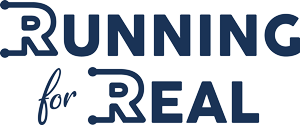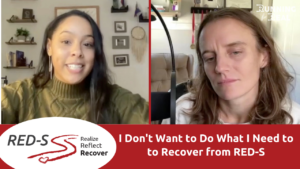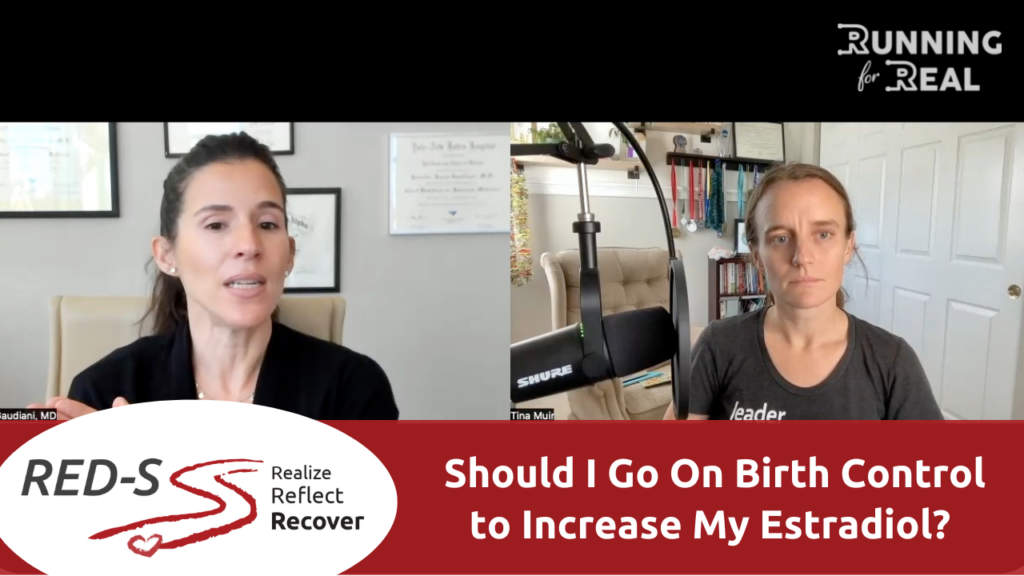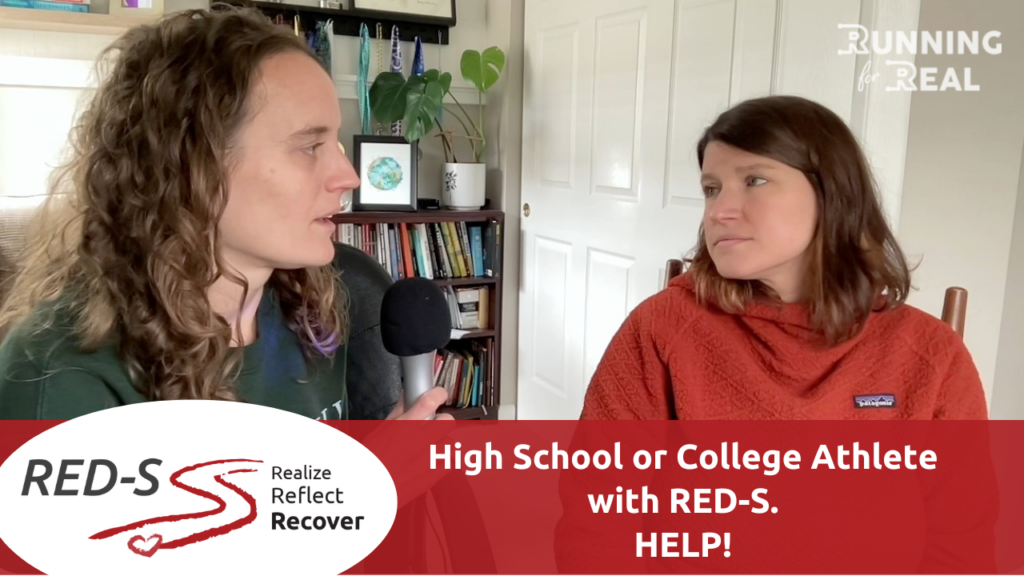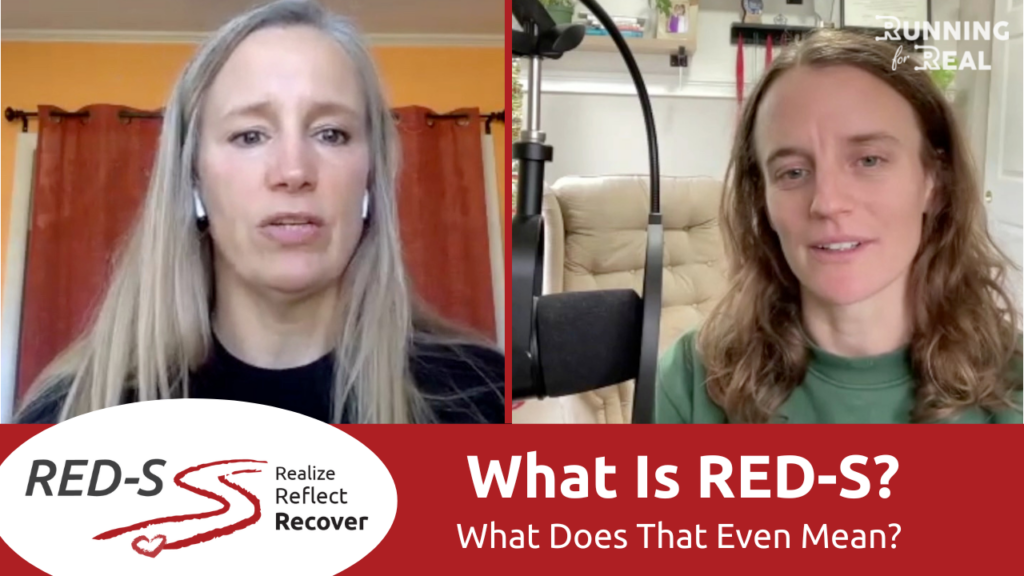You know that you should address having RED-S / REDs (Relative Energy Deficiency in Sport) and amenorrhea, but it just seems as though there are so many steps to getting there. Where do you even start?
Sport psychologist Marissa Norman understands how hard it can be to make a big change. She shares strategies for creating a plan and breaking it down into manageable steps, so that reaching your goal seems less daunting.
Read the transcript
[Tina] I feel like not addressing my amenorrhea, or getting my period back, is a big weight on my shoulders, but I just can’t take that step to do what I need to do.
[Marissa] Anytime we want to make change, change that is important to us, it absolutely can feel like a big weight on our shoulders, and oftentimes I find that when people want to make change, their brain automatically goes to the outcome, like ultimately where they want to get to, that desired outcome for themselves. And then they think about all of the steps necessary to get to that point in its entirety, and that can feel extremely overwhelming and can be debilitating, where we just feel like we can’t make moves; we can’t make that first step. So before we jump into action, which I think a lot of us, we just want to start doing, it’s important that we take a moment. We reflect, and we plan in a way that really sets us up for success.
So the first thing I would encourage you to think about is creating a plan, and of course doing this with a professional can really assist the process. So if you are someone that’s very much an outcome, future-oriented thinker, one way to go about that plan is again, think about where you want to be. What does that healing goal look like for you, and then ask yourself, “Well, before I get right to my healing goal, what is the step that comes right before then?” And then okay, so that’s the step. And then before this step, what is the step that comes right before there, and work your way kind of backwards to where you are now. And wherever that first step is, that’s the only step we’re focusing on right now, versus the entire kind of trajectory up to our goal.
If that still feels overwhelming, because it could, that first step, let’s break it down into four, tiny, small steps. So then things feel more manageable and more doable there. And we can do that for each step on the way. That’s one thing I would definitely recommend.
Another thing that I think sometimes we forget to do until we’re in the situation, is try to anticipate potential barriers and plan for those. Obviously, we can’t plan for every single hurdle we’re gonna face, but let’s think about maybe six, five barriers that we think we might struggle with. And that’s obviously going to be very different for everybody. And maybe even write down what that barrier might be and how you would like to overcome that. In those moments, what do you want to remind yourself of, what resources will you utilize, who will you lean on, how will you get over that barrier? And that process helps us feel more confident moving forward that even if there are challenges, which there will be, you already know how you’re going to handle them. And so instead of feeling like big hurdles, maybe now they feel like the banana hurdles, more manageable.
And then the the other piece I would say is, of course you want to be able to ahead of time, identify what your resources are and who’s your support system, and if there’s anything missing, that feels like it’s missing, in your resource list or in your support list, how do we fill those gaps. And when it comes to support system, we really want to be intentional about thinking about how do we want to get that support from the people, right? Because people support us in the way they think we want to be supported, but aren’t necessarily supporting us the way we want to be supported. So thinking about, “Do I want emotional support from this person? Do I want more like someone to kind of be harder on me and hold me accountable? Am I looking for someone for more of that tangible support; maybe they’re going on walks with me or they’re driving me to my appointments?” and then the most important part there, is communicate that to those people, so that they know how to support you. So all of these things, planning, kind of thinking about barriers and planning for those, identifying and accessing your support and your resources, helps take some of that weight off of your shoulders and makes this process feel more manageable.
[Tina] Yes, thank you so much. That’s really, really helpful.
check it out
Recovering from RED-S is hard. It’s even harder if you’re working through it alone. Even if you have professional support, they’re not available 24-7, and that can lead to going down search engine rabbit holes that have the potential to derail everything.
Our online resource, RED-S: Realize. Reflect. Recover, will answer all those questions swimming around in your head about recovery. It will give you the opportunity to connect with the experts you’ve come to know here, and to surround yourself with a community of others who are going through it too.
THANK YOU! to Athletic Greens and Tracksmith for supporting this YouTube series and RED-S: Realize. Reflect. Recover.
Go to athleticgreens.com/reds to get five free travel packs of AG1 and a free one year’s supply of vitamin D3+K2 with your subscription!
When you go to https://tracksmith.com/tina and use the code TINA15 at checkout, you’ll get free shipping and Tracksmith will donate 5% of your order to Rising Hearts, the Indigenous-led nonprofit founded by Jordan Marie Daniels.
more about Marissa:
Marissa Norman, Psy.D, CMPC, is a Sport Psychologist in the New Jersey area. She has her own private telehealth practice, and works with youth to professional athletes from mental skills training to mental health services. She’s a former college track and field pentathlete who loves to laugh, to eat, and adventure. You can find Marissa at https://www.topformpsychology.com/team-sport-psychology.
